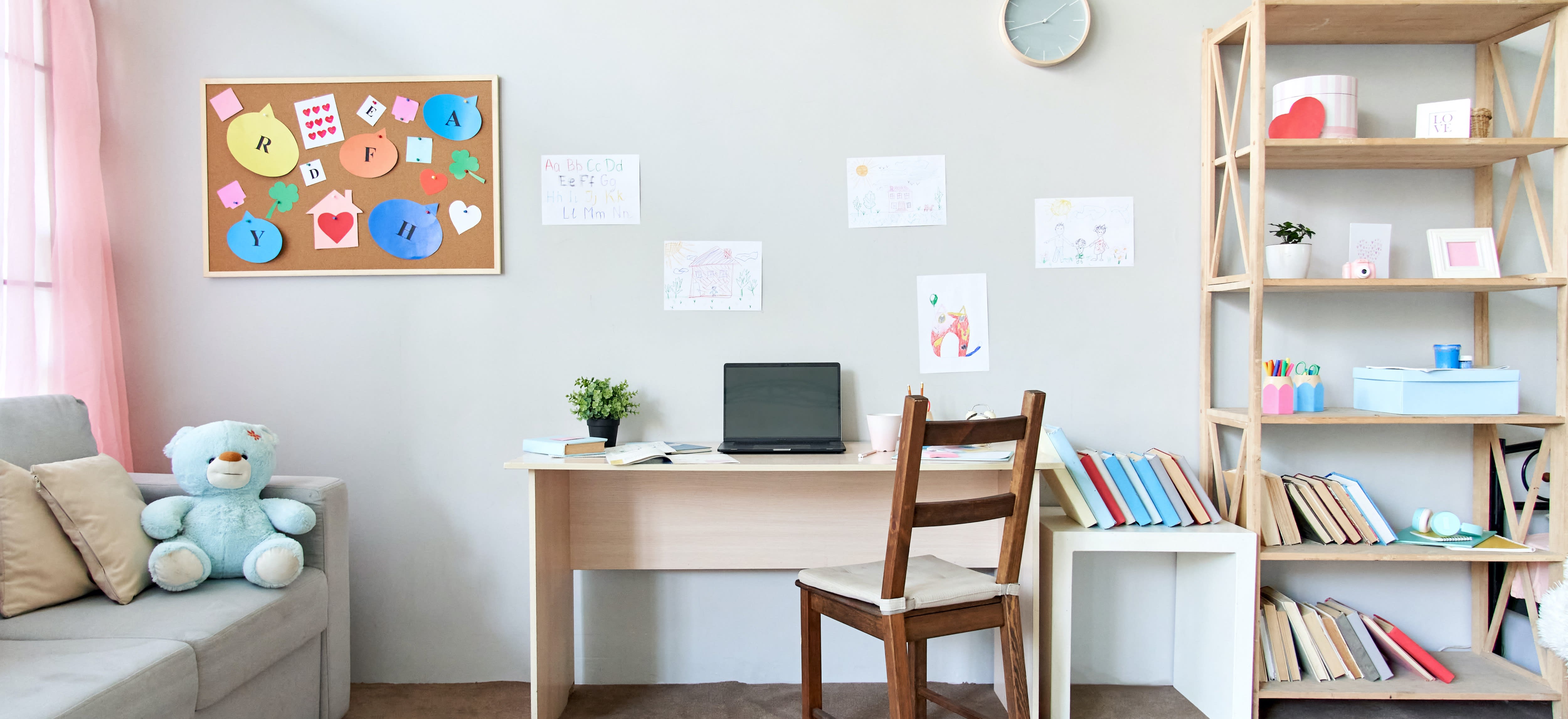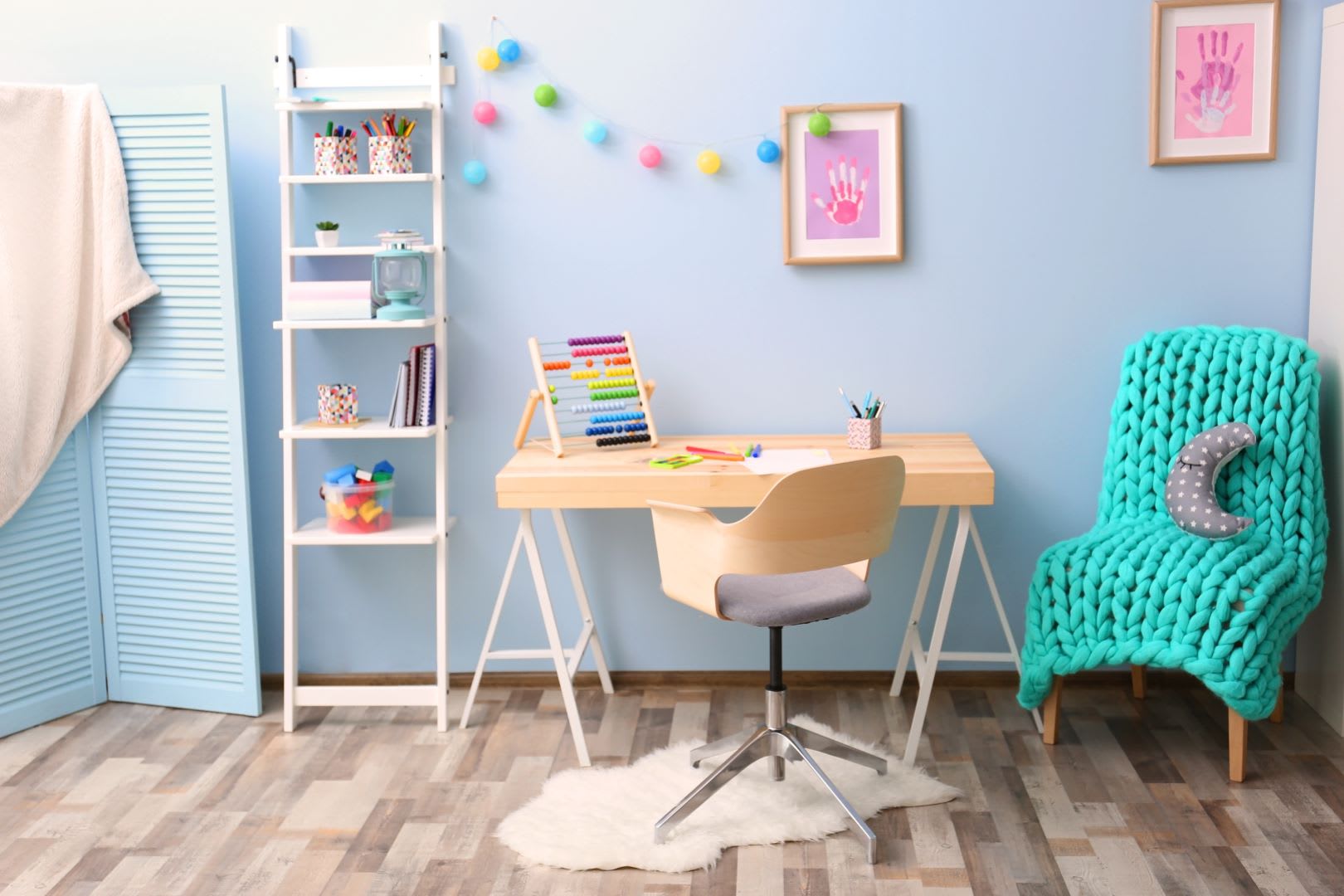How to Create a Study Space at Home That is Fun and Productive

Posted on August 2nd, 2024
Have you ever noticed how a sunbeam streaming through the window can transform a room, filling it with warmth and light? The same can be true for your child's study space. Choosing a spot in your home that is bathed in natural light can significantly enhance their productivity and mood.
But remember, it’s not just about finding any sunny spot—the surroundings also play a large role in how effective a study space can be. Imagine trying to focus with a TV blaring in the background or someone passing regularly. These everyday distractions can disrupt your child's concentration and impede their learning. It's worthwhile to look for a quieter corner of the house.
Sometimes, a corner in the living room that’s away from the main walkways or a desk tucked into a quiet bedroom corner makes all the difference. The goal is to create an environment where your child can focus with ease, away from high-traffic areas and loud appliances. Your home may have more potential study spots than you might initially think; it’s all about finding that balance between privacy and comfort.
In this blog post, we'll provide effective tips to create a study space at home that does not only foster productivity, but also inspires and motivates your kids.
Identifying the Perfect Spot
To effectively create a study space at home for your children, it’s crucial to hone in on the spot that will ultimately nourish their creativity and learning.

Seek Out a Place Infused With Natural Light
A sunlit area not only makes the environment more welcoming but also helps keep your kids alert and focused. Ever notice how much more alive everything seems in the light of day? That same vibrancy can enhance a kids study space. However, be mindful of glares or direct sunlight that might cause discomfort or distraction.
Consider the Level of Distraction
It's no good setting up a study space for kids right next to the TV or in a high-traffic area where family members come and go. Keep sensory distractions to a minimum—no clamorous video consoles, no noisy appliances. Think about your home and where it's quieter but still feels comfortable. Sometimes, a corner in the living room away from the main walkways can work, or perhaps a secluded desk in a bedroom.
Don't Forget Accessibility
The study space should be easy for your children to get to and from without navigating a maze of obstacles or requiring adult assistance constantly. It should be close enough to where the family usually gathers, providing a sense of inclusion, yet distanced enough to offer uninterrupted focus time. Ensure this spot accommodates all their study materials comfortably, and perhaps throws in a cozy chair or a small plant to make it feel special.
Designing a Fun and Motivating Study Space

Pick a Theme Together
Collaborate with your child to choose a theme that excites them, whether it's a favorite animal, a beloved color palette, or an inspirational figure. Decorating with vibrant, eye-catching colors can breathe life into the area and make it a place they look forward to spending time in.
For instance, rotating seasonal decor or adding their latest school artwork could offer a fresh, dynamic environment that fosters continual interest. Why not let your child create some of their own decorations? Crafting personalized elements will give them a sense of ownership and pride every time they sit down to study.
Add Motivational Posters and Quotes
Incorporate educational posters that tie into their school subjects, such as colorful maps, multiplication charts, or inspirational verses. Also, motivational posters and quotes can serve as gentle reminders of Christian values like kindness, perseverance, and faith. To keep the energy positive and engaging, consider adding a chalkboard or whiteboard where they can freely draw or jot down ideas and to-do lists. This mix of aesthetically pleasing elements combined with functional tools can make learning enjoyable and less of a chore, striking a perfect balance between structure and creativity. It's essential that these elements support your child's educational goals while simultaneously making the space visually appealing.
Consider Ergonomics and Storage
When planning a fun study space, it’s essential not to overlook ergonomics and storage solutions:
- Comfortable seating and a well-sized desk can have a tremendous impact on their concentration levels and overall well-being. Imagine how much easier it will be for them to sit down willingly if the chair is cushy and the desk is just the right height.
- Introducing functional storage options like shelves, containers, or desk organizers keeps the study space for kids tidy and clutter-free, which is vital for maintaining their focus. You and your child can label storage bins together, making it a fun exercise and ensuring that everything has its own place.
Remember, the goal is to foster an environment where your child feels comfortable, engaged, and motivated to learn. By balancing colorful, stimulating decorations with practical, well-thought-out components, you create a study space that not only meets their educational needs but also sparks joy and inspiration.
Incorporating Engaging Reading Books and Materials

Have you noticed how kids often emulate their surroundings? A study space adorned with captivating books and diverse learning tools encourages a mindset where education is exciting rather than obligatory.
- Sprinkle in some fun workbooks, puzzles, and interactive materials to keep their interest piqued. Remember, the goal is to create a dynamic environment that fuels their imagination and motivates them to explore new ideas.
- Don't forget to rotate the materials periodically to keep the space fresh and exciting.
- Perhaps introduce a weekly 'book of the week' that you can read together, discussing its themes and lessons. This provides an opportunity for bonding and spiritual growth while emphasizing the importance of education in a relaxed, enjoyable setting.
- Including educational resources that align with their school curriculum can reinforce what they are learning in class, making the study experience well-rounded and enriching.
- Why not make it a point to visit local libraries or bookstores together, building an ever-evolving library at home? Creating a study space for kids that’s brimming with engaging educational books and materials not only caters to their academic needs but also nurtures their emotional and spiritual growth.
Final Thoughts
When you create a dedicated study space filled with engaging books and the right environment, you profoundly impact your child's academic journey and spiritual growth. Beautifully illustrated children's books teaching Christian values can be a significant part of this nurturing space. Each book on their shelf becomes a tool to inspire not only their minds but also their hearts.
Janet Ashmore offers a collection of fully illustrated books tailored to captivate young minds, holding their attention while imparting Christian values seamlessly woven into engaging narratives. Through relatable characters and vivid illustrations, these stories can leave lasting impressions. Curious about which books to add next?
Don’t miss out! Explore Our Fully illustrated Children’s Books
Reach out via email for personalized recommendations that fit perfectly into your child's study space and support your educational goals.
Get In Touch
Let's Connect
I am always happy to hear from you, so don’t hesitate to send a message below!
